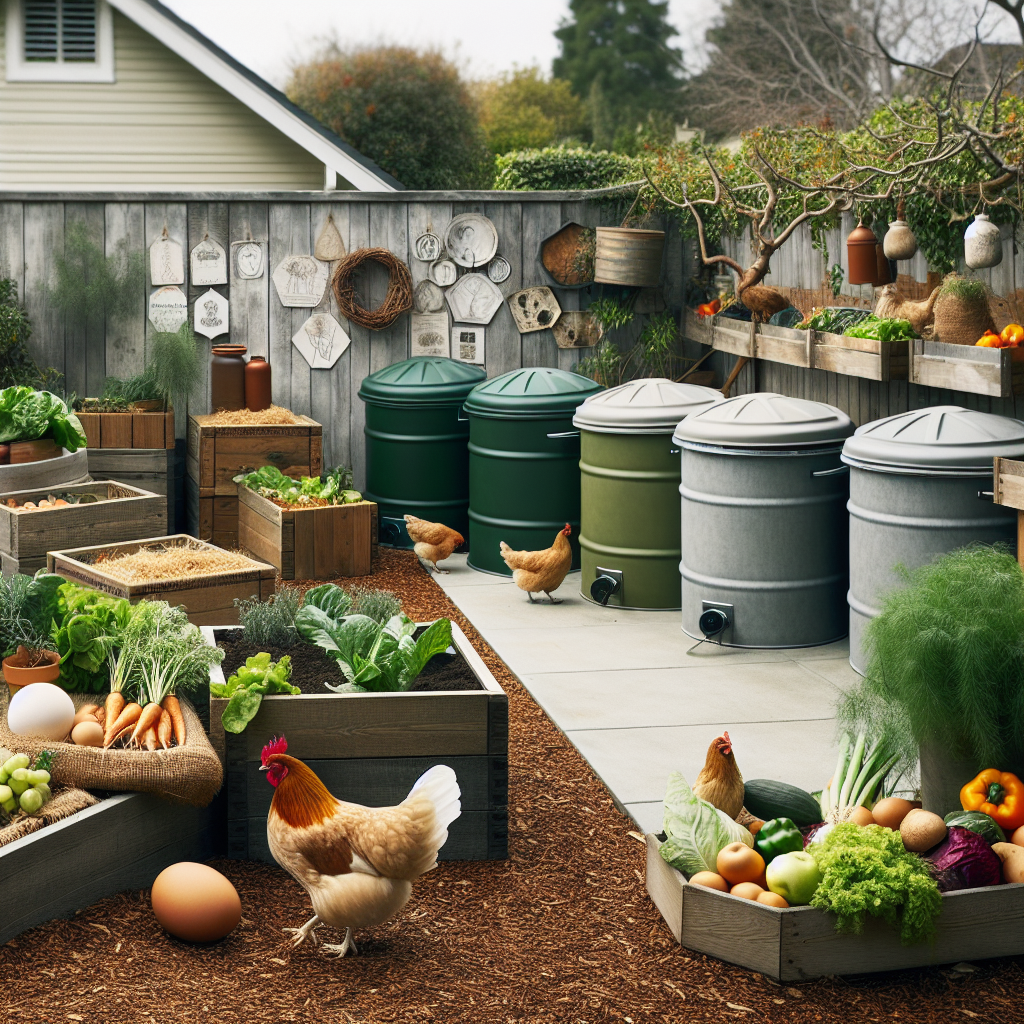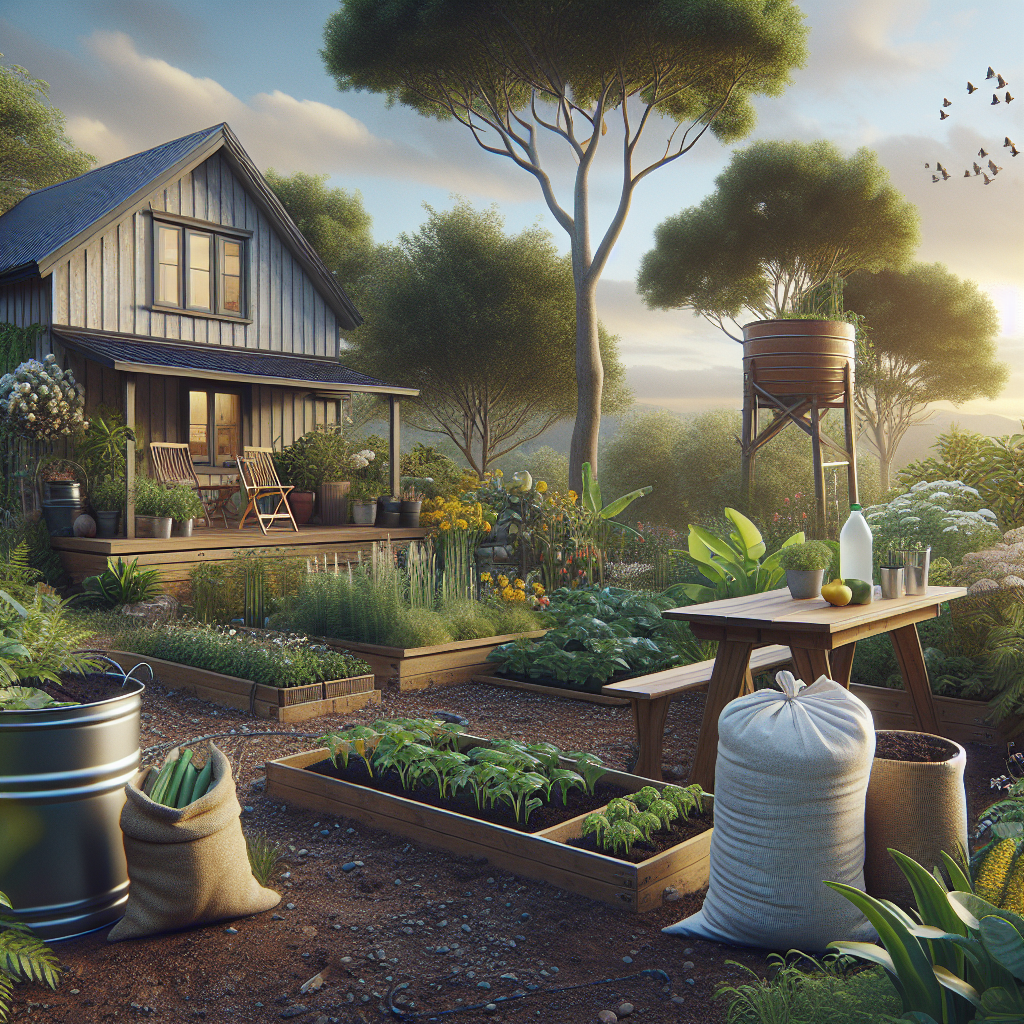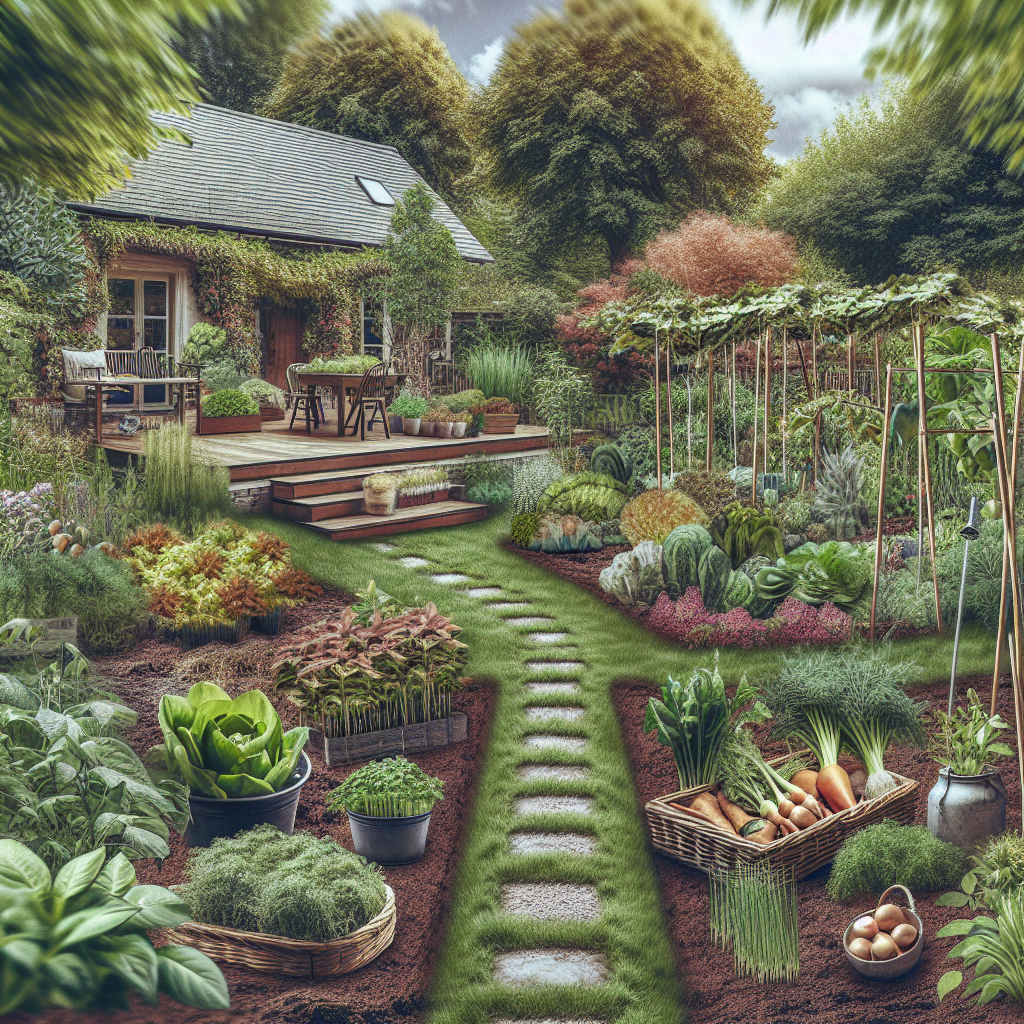Have you heard about the growing interest in regenerative backyard gardening and want to learn how to incorporate regenerative agriculture into your own backyard? You're in the right place!
Imagine transforming your once simple patch of grass into a thriving oasis of vibrant vegetables, fragrant herbs, and bustling ecosystems. Perhaps you even envision chickens roaming freely!
This gardening revolution offers more than just charm and personal satisfaction. It aims to nourish our bodies while preserving our land, one backyard at a time.
Read on to explore the benefits and challenges of regenerative farming at home, along with tips on bringing your backyard garden to life and enjoying a bountiful harvest.
Getting Started with Regenerative Farming

Understanding the Basics
Let's start with the basics - what is regenerative agriculture? How does it work? We'll bring you up to speed on this backyard revolution below.
Defining Regenerative Agriculture
Regenerative agriculture goes beyond typical sustainable methods by actively rejuvenating and revitalizing the soil, local ecosystems, and the environment. It recognizes that healthy soils support a rich network of microorganisms, enhancing soil fertility and plant resilience.
Next, we'll delve into the benefits of regenerative farming shortly. But first, let's contrast regenerative practices with traditional home gardening.
.
Key Features of a Regenerative Home Garden
A regenerative garden thrives on diversity, unlike traditional gardens that often focus on a limited range of crops. It involves planting a variety of species that support each other, like tomatoes alongside basil, beans climbing cornstalks, and marigolds scattered to repel pests.
Regenerative gardening also minimizes soil disruption, avoiding the negative effects of excessive tilling on soil structure and beneficial organisms. Instead, it utilizes organic mulching to protect the soil, suppress weeds, and nurture beneficial critters.
Furthermore, regenerative farmers prioritize natural inputs for pest control and fertilization. They rely on beneficial insects, natural pesticides, and compost to promote plant health without synthetic chemicals.
How it Differs from Traditional Home Gardening
Understanding traditional gardening helps highlight the profound benefits of regenerative farming at home. Traditional methods often involve frequent tilling, monoculture planting, and reliance on synthetic inputs. In contrast, regenerative gardening emphasizes natural processes, symbiotic relationships between plants and animals, and long-term soil health.
Gardeners practicing regenerative techniques become stewards of ecological restoration in their backyards, not just producers of food.
Why Try Regenerative Farming at Home?
The benefits of regenerative farming at home can be categorized into three areas, illustrating its profound impact on gardening:
Personal Benefits
Produce grown in regenerative gardens tends to be more nutritious, with richer flavors and essential nutrients. Gardening itself also promotes mental well-being, reducing stress and providing a fulfilling sense of accomplishment.
Ecological Benefits
Regenerative gardens support diverse ecosystems, attracting beneficial insects and birds while improving local biodiversity. They also contribute to carbon sequestration, mitigate climate change, and enhance soil water retention.
Economic Benefits
Homegrown food from a regenerative garden can reduce grocery bills and enhance property value. By minimizing the need for store-bought inputs and optimizing resource use, regenerative gardening proves economical and sustainable over time.
The Challenges of Regenerative Farming at Home
While the benefits are substantial, it's essential to acknowledge the challenges of regenerative farming at home:
Choosing the Right Spot
Selecting a suitable location for your garden is crucial. Opt for a sunny spot with well-draining soil to ensure optimal growing conditions for your plants. Consider factors like sunlight exposure, water accessibility, and proximity to your home when picking the perfect spot for your regenerative garden.
Getting Started With the Soil
Assess your soil's condition through testing and improve it using compost, aged manure, or other organic amendments to enhance fertility and structure.
Planning Your Garden Layout

Sketching Your Garden Design
Before diving into planting, Sketch a rough layout of your garden, considering factors like plant spacing, companion planting, and pathways. Planning ahead helps you optimize space and promote biodiversity within your garden while ensuring an organized and visually appealing layout.
Choosing the Right Crops
When selecting crops for your garden, opt for a diverse range of fruits, vegetables, and herbs. I incorporated a mix of seasonal produce and perennial plants that would not only provide a variety of nutrients but also support pollinators and beneficial insects in my garden ecosystem.
Selecting Plants and Crops
Choose plants that thrive in your climate and coordinate planting schedules with seasonal changes for optimal growth.
Maintaining Your Regenerative Garden

Incorporating Sustainable Practices
To nurture your regenerative garden, Implement sustainable practices such as mulching, rainwater harvesting, and natural pest control methods. These eco-friendly approaches minimized environmental impact while promoting a healthy and biodiverse garden environment.
Composting and Natural Fertilizers
Use home composting and natural fertilizers like seaweed or fish emulsion to enrich soil fertility without synthetic chemicals.
Monitoring Plant Health
Regularly monitoring the health of your plants is essential for identifying issues early on. By observing growth patterns, checking for pests, and assessing soil quality,your are able to address potential challenges promptly and maintain the vitality of your regenerative garden.
Crop Rotation and Polycultures Practice crop rotation and polyculture planting to maintain soil health, prevent pests, and enhance plant diversity.
Natural Pest Control Solutions Encourage beneficial insects and companion plants to naturally manage pests and diseases in your garden.
Regular Monitoring and Learning Observe your garden's progress, adjust practices as needed, and continue learning about regenerative techniques through workshops and resources.
Embracing the Rewards of Sustainable Farming
Embarking on this journey of starting a regenerative garden at home is incredibly rewarding. Not only will you cultivate a thriving garden ecosystem that supports local biodiversity, but you will also reap the benefits of nutrient-rich produce grown right in your backyard. Sustainable farming practices will not only enhance your connection to nature but will also contributed to your overall well-being, aligning with a holistic approach to health and wellness.
Embark on your own regenerative farming journey by starting a garden in your backyard. Embrace sustainable practices, nurture the soil, and witness the beauty of growing your own food sustainably. How to start a regenerative garden at home is not just about sustainable farming – it's about fostering a deeper connection to nature and promoting a healthier lifestyle. Let your backyard be the canvas for your sustainable farming adventure!
.png)
Comments